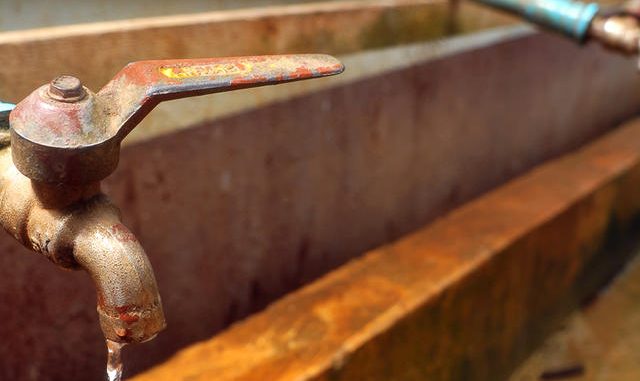
By A NARAYANAMOORTHY and P ALLI
Illegal diversion by private tankers and rampant misuse by beverage and packaged water units have to be checked
The latest report of the Central Groundwater Board (CGWB, 2016) underlines that the water level has declined in 64 per cent of the total monitoring wells. A new study by researchers at IIT Guwahati reveals that only six out of 22 river basins in the country have the potential to cope with the threat of climate change, particularly droughts.
The NITI Aayog in its report on ‘Composite Water Management Index’ (2018) has underlined that nearly 600 million Indians faced high to extreme water stress and about 2,00,000 died every year due to inadequate access to safe water.
The water storage capacity of innumerable small water bodies has eventually declined due to centuries of neglect and mismanagement. The World Bank, in its report ‘India’s Water Economy: Bracing for a Turbulent Future (2006)’, had clearly outlined that dams in India have the capacity to store only about 30 days of rainfall.
All these indicate that water stock is not adequate for future use in India. The country’s growing water scarcity is not only due to climate change and constant competing demand from various sectors, but due to rampant water theft as well.
Who are the water thieves?
It is reported that many multinational beverages and packaged water business firms steal groundwater in many places. The gram panchayat authorities in Palakad district of Kerala allege that a multinational company draws 6.5-15 lakh litres of groundwater per day against the permissible limit of 2.4 lakh litres.
In fact, some multinational firms in Meghalaya, Andhra Pradesh, Kerala, Tamil Nadu and Rajasthan have reportedly suspended their bottling operations following massive protests by villagers. Hotels, marriage halls, recreation clubs, manufacturing firms and building contractors in many areas lift water illegally from nearby ponds and lakes mostly during night, thereby reducing the availability of water for the poor and livestock.
Residents in illegal multi-storied buildings and vast slums that are not connected to any official water pipelines are generally involved in stealing water. For instance, a housing society in Mumbai, which did not possess any occupation certificate, was reportedly penalised by BMC in 2017 for stealing water from its pipelines for almost 25 years.
Some 2,000 to 10,000 private water tankers reportedly operate illegally on a daily basis in Delhi, Mumbai, Bengaluru and Chennai supplying loads of water mostly to industries.
In Gurgaon, for instance, it is estimated that as much as 50 lakh litres of groundwater is extracted by the tanker mafia daily and sold to industrial units and construction sites.
According to the Centre for Science and Environment, in Gurgaon around 20,000 illegal bore-wells were dug by tankers. This could be the main reason why the annual groundwater draft is very high in Delhi; 0.39 BCM (billion cubic meters) as against the net availability of 0.31 BCM as per CGWB data released in June 2017.
Water theft and unauthorised water connections to a high level of unaccounted water. Citing the City Development Plan documents of various years, a recent study on Water Governance (2013) reveals that unaccounted water in Delhi amounts to around 50 per cent of the total water pumped into the system, whereas it is 35-40 per cent in Hyderabad and Bengaluru.
Water theft is so severe that in the worst situations, this can lead even to a lack of drinking water. This is exactly what is happening in India right now. In its report, ‘The Challenge of Reducing Non-Revenue Water in Developing Countries (2006)’, the World Bank reveals that some 48 million cubic meters of drinkable water escape daily from official supply networks, enough to provide water for 200 million people.
In fact, the World Bank in its report on India – Water Supply and Waste Water Services in Bombay (1996) had clearly highlighted that 40-60 per cent of water in Mumbai is lost through illegal diversion.
What needs to be done?
The major reason for theft and mismanagement is that water comes cheap. A study by the Asian Development Bank (ADB, 2007) showed that the average water rates for all customers, including industrial, commercial and public customers, is ₹4.90 per cubic meter and the average residential rates are still lower.
It is also reported that the country’s thermal plants pay a pittance for water which is one of their primary raw materials. Policymakers need to recognise that a series of measures need to be implemented on a war-footing to sensitise people about efficient use of water.
Foremost, water needs to be treated as an economic good and priced in a way that the full capital investment plus the operation and maintenance costs come back to the system. There should be two tiers of pricing. A certain amount of water for meeting basic needs should be provided at a minimum price or even given away free. But beyond that there should be volumetric supply and pricing — that is, the more consumed, the higher the charge.
This has been implemented successfully in certain places, notably in Maharashtra’s Nashik district at the tail-end of Waghad Irrigation Project by three Water Users’ Associations. But this needs to be replicated nationally. The latest CGWA guidelines, if implemented earnestly, would make a major difference. The guidelines make it mandatory for all industries to obtain NOCs from the CGWA and in overexploited blocks, industries have to recycle and reuse their waste-water; withdrawal of freshwater will be allowed only if groundwater recharge has been sufficient.
If these steps are followed strictly, the country may be able to minimise its water scarcity.
The writers are Member (Official), Commission for Agricultural Costs and Prices, and Senior Assistant Professor, Department of Social Sciences, Vellore Institute of Technology, respectively.

Leave a Reply